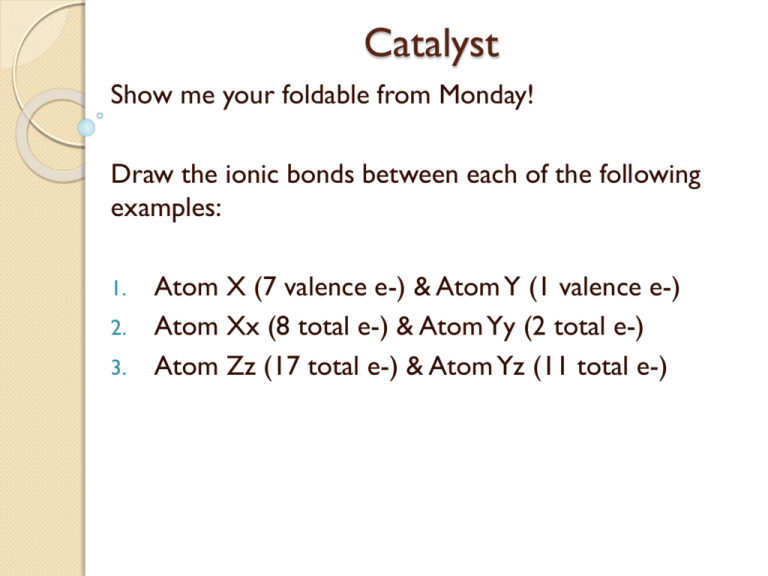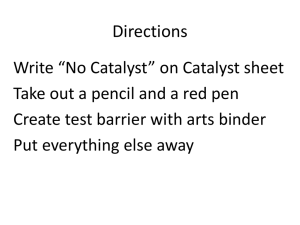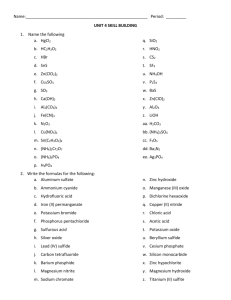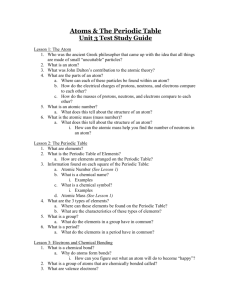DNA Project (Due Wednesday):
advertisement

Catalyst Show me your foldable from Monday! Draw the ionic bonds between each of the following examples: 1. 2. 3. Atom X (7 valence e-) & Atom Y (1 valence e-) Atom Xx (8 total e-) & Atom Yy (2 total e-) Atom Zz (17 total e-) & Atom Yz (11 total e-) Steps for Creating Ionic Bonds 1. Draw Lewis Dot structures. 2. Figure which atom is more likely to give away electrons. 3. “…” receive electrons. 4. Figure # e- to be transferred. 5. Draw arrow showing e- moving. 6. Write charges of new ions. Catalyst Draw the ionic bonds between each of the following examples: 1. 2. 3. Atom X (7 valence e-) & Atom Y (1 valence e-) Atom Xx (8 total e-) & Atom Yy (2 total e-) Atom Zz (17 total e-) & Atom Yz (11 total e-) Catalyst (11.13.2008) Draw the atomic models for each of the following isotopes & ions: 1. 2. K-35 Al3+ When you are done with your catalyst, show me – and then you can work on your comic book & ionic bonds practice (which is due tomorrow!) Catalyst (11.14.2008) Answer the following Catalyst questions. 1. Calculate the charge of a particle that has 18 protons, 16 neutrons, and 16 electrons. Element Zz has 5 protons, 6 neutrons, and 5 electrons. 2. Draw the atomic model for Zz3+ 3. Draw the atomic model for Zz-12 4. Draw the ionic bond between Hydrogen & Fluorine. Ionic Bonds Project (Due Monday): Imagine you are trying to teach everything you know about ionic bonds to an 8 year old. Create a comic book which explains everything you know about ionic bonding so far in a way an 8year old could understand it. Be sure to include the following points: (1) (2) (3) (4) What ionic bonds are What charge is How ionic bonds are formed Example of an ionic bond






